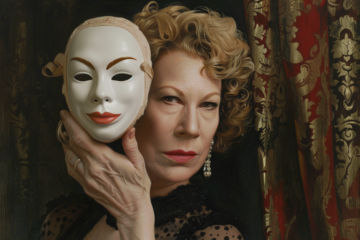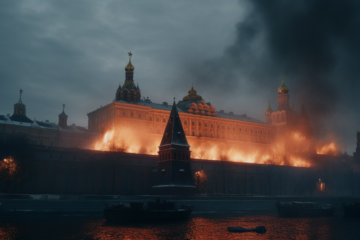Jews in Czarist Russia
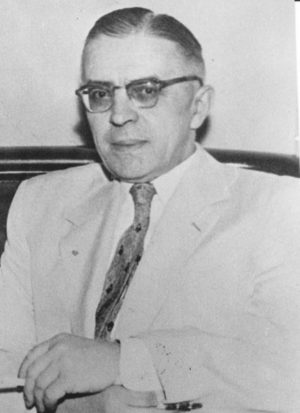 Jews have greatly exaggerated their travails in Russia, as elsewhere.
Jews have greatly exaggerated their travails in Russia, as elsewhere.
OF ALL THE glaring hiatuses in the chronicle of man, none is more obscured than the true history of Russian Jewry. In the 19th century, we have all been told, Russia withheld nearly all the basic human rights from its Jews by forcing them to reside within a narrowly circumscribed rural ghetto known as the Pale of Settlement. If this were not enough, quotas were enforced to keep Jews down to an acceptable number in business, government, education and the professions. Even worse, the official government persecution was occasionally intensified by bloody pogroms in which “black hundreds” and various armed gangs roamed the countryside, burning and looting Jewish property and massacring the owners and their families. (ILLUSTRATION: Andrey Diky)
All this, say our history books, came to an end with the revolution of February 1917 when Jews were given full equality. With the rise of Stalin and the decline of Trotsky, however, anti-Semitism was, so to speak, re-instituted, reaching a new high just before Stalin’s death in 1953, tapering off somewhat during the “Thaw,” but still going strong in the form of massive military and financial aid to certain Arab states, arrests of Zionists and Jewish dissidents and a slow weeding out of Jews from the Soviet political, educational and scientific hierarchy.
Such in essence is the simplistic view that has been fed to the West by its simplistic media. A great deal of contradictory evidence, particularly having to do with events in the 19th century, has been deliberately omitted — so much evidence that a Russian refugee felt compelled to write a book to set the record straight. It is entitled Jews in Russia and in the U.S.S.R., and the author is Andrey Diky, who died a few years ago. His work has now been translated into English by L. Volovlikoff and may be freely accessed on the Web. The book had to be privately printed since its contents far exceed the permitted parameters of any contemporary major or even minor publisher in the very Jewish world of publishing.
Andrey Diky starts out by reminding us that Russia at the turn of the century was the power center of World Jewry. The Czar held sway over 5.5 million Jews, the number that remained after 1.5 million had emigrated to America. The Jewish problem, as it existed in Russia at that time, made worldwide ripples, such hostile ripples that President Wilson hesitated to propel the U.S. into World War I until the Czar had been overthrown bv a “democratic” revolution. In fact, the part played by Russian Jews on the world scene was so far-reaching in its influence, it is the considered opinion of author Diky that without them there would have been no Soviet Union, no Israel and no World War II — since the rise of fascism was largely due to its anti-Communist appeal.
In the beginning, according to Diky, the history of Jews in Russia followed the same haphazard pattern it did in other white countries. Jews were known to be in Russia early in the 11th century. They became rich, so rich they even owned many of the Christian churches, which were leased by them to Orthodox priests. The inevitable pogroms and bagarres followed. The Jews were expelled. And Russia remained, like England, free of Jews for centuries. When the Empress Elizabeth, who reigned from 1741 to 1762, was asked to let them in again because their financial expertise would be profitable for Russia, she replied, “From the enemies of my Lord Jesus Christ, I desire no gain.”
Jews did manage to get back into Russia under the protection of Elizabeth’s successor. As Diky writes, “Catherine II, shortly after ascending the throne, decided to open the door to colonists, especially in the southern provinces.” For this purpose the Chancellory for the Guardianship of Foreigners was created in 1763. Catherine, a German by birth, decided to include Jews in the number of these colonists. She let her intentions be known by a decree of the Governor of Kiev and by secret correspondence to the governor of Riga, General Braun, in which the latter was advised that “if some foreign merchants want salesmen, representatives and workers to settle in Novorossiisk, proper passports must be issued to them, irrespective of their reilgion.” For “others who might want to go to Petersburg … only their name must be stated in their passports” and for their identification they will “present a letter from the Petersburg merchant Levin Woolf.”
“In such a mysterious way,” Diky explains, “the settlement of Jews in Russia was initiated …. The autocracy of Catherine “did not free her from the necessity to respect the opinions and tastes of persons surrounding her, as well as the great masses of Russian people for whom all ‘Jews’ were ‘enemies of Christianity.’ This is why in [Catherine’s letter] the word ‘Jew’ is carefully avoided …. The names of these merchants were David Levy, Moses Aron, Israel Lazar and the worker Jacob Marcus.”
Diky next points to the 1791 decree of Catherine II, which gave Jews equal rights with “merchants, artisans and the lower middle-class Russians of those towns and settlements in which they lived.” He also recalls the 1804 decree of the Emperor Alexander, conveniently forgotten by most historians, which allowed Jews free access to education. The exact words were “All Jews can be accepted and educated, without distinction, from all other children, in all the Russian schools, high schools and universities.”
In 1815, after the tremendous territorial expansion that resulted from the partition of Poland and victory in the Napoleonic wars, Russia suddenly found herself with 1,200,000 Jews who had previously lived outside Russian frontiers. At first the government endeavored to assure that the new subjects, Jews and non-Jews alike, had equal rights in the annexed territories. The earlier decrees giving Russian Jews the right to live in some other areas in Russia proper were extended to Polish and other Jews. But Jews were forbidden to join merchant associations “in the central Russian cities and ports” — an act which could be construed as the first step in the establishment of the much misunderstood Pale of Settlement.
The limitations of the Pale, Diky explains, “did not apply to the following categories of Jews: Those of non-Judaic faith … merchants of the first guild (that is, the more well-to-do Jews) … dentists, doctors and lawyers, pharmacists, mechanics, distillers, brewers … specialists and artisans … salesmen and sales agents who worked for the Jewish merchants of the first guild. Owing to the existence of these numerous exceptions and the skillful use of them by the Jews, there was not at the beginning of the 20th century, a single city in Russia that did not have a large Jewish colony.”
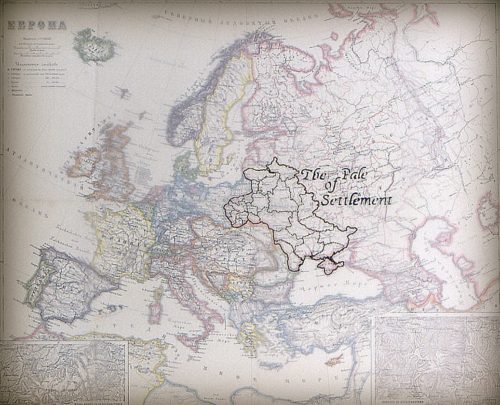
The presence in these cities of rich Jews living in splendid residences and palaces and attending religious worship in richly ornamented synagogues showed that the boundaries of the Pale were easy to overstep. On the other hand, the Pale did have limitations for poor Jews in Poland and southwest Russia — a condition which provoked a great deal of sympathetic response from the Western liberal press.
By the middle 1880s, in spite of the Pale, Jews began to dominate the Russian educational system. For example, 41.5% of the medical faculty of Kharkov University was Jewish in 1886, as was 30.7% of the medical faculty and 41.2% of the law faculty of Odessa University. Because of this large and increasing disproportion, the Russian government in 1887 introduced “percentage quotas” which limited Jews to 10% in high schools and universities in the Pale, 5% outside the Pale, and 3% in Moscow. The quotas did not receive their desired results, however, since many Jews began to change their religion, mostly to Protestant denominations, and thus ceased to be counted as Jews. [Could this explain some percentage of the “non-Jewish” but pro-Jewish-agenda elite in both the West and the East today? — Ed.] Others went abroad to get their degrees. Still others went to private schools and colleges in Russia, where the numerus clausus did not apply. In 1917, in spite of the quotas, 12% of all Russian students in higher institutions of learning were Jews, whereas the Jewish percentage of the total population was 4%. Yet the world was constantly being informed that in Russia “access to education was closed to Jews.” If this was true, asks Diky, where did all the Russian Jews who founded the state of Israel get their degrees?
Percentage quotas were also applied to representation in city government, but not in state assemblies. “One Jew, Valnshtain,” writes Diky, “was even a member of the State Council, and participated in sittings alongside the highest dignitaries of the Russian Empire.”
Until 1827 Russian Jews were exempted from military service. Then Jewish authorities were permitted to choose their own recruits for the draft, which meant only the poorest and most ignorant Jews saw military service. Later Jews were subject to conscription like other Russian subjects, but were not permitted to be officers. On the other hand, Diky states, “by the beginning of the first World War, the majority of the periodical Russian press, was either in Jewish hands, or under Jewish influence and control.” As for economics, Jews in pre-revolutionary Russia were dominant in the sugar refinery business, textiles, brewing, wholesale liquor, gold mining, lumber and the grain trade. Mr. Diky adds, “only two banks in all of Russia did not have Jews on their board of directors.”
Like the death camp propaganda of World War II, the Russian pogroms, according to Diky, were blown up out of all proportion. The pogrom at Kishinev in 1903 involved a loss of only 49 lives, some of them non-Jewish members of government forces attempting to put down the disturbance. The biggest pogrom (Odessa 1905), which produced 500 fatalities, of which some 300 were Jews and some 200 non-Jews, was as much of a Jewish uprising as a racial riot. The pogroms grew out of the revolutionary ferment in the latter part of the 19th century, which culminated in the 1881 assassination of Emperor Alexander II, an act of terror in which some Jews collaborated and which most Jews welcomed. The economic motives of the pogroms, always ignored in the world press, were extremely important. Jews had achieved such prominence in moneylending and the retail trade and were exploiting their clients and customers so mercilessly that, like the blacks in many American inner cities, peasants and townspeople could only regard Jews as a usurious plutocratic caste that was out for their blood. Diky reveals one of the little known episodes of the pogrom years by stating that a leading group of Jewish revolutionaries actually proclaimed the pogroms were justified and should be supported because they were directed against the “zhidy” capitalist Jews.
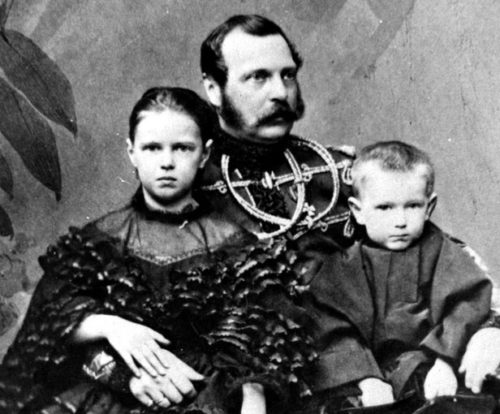
Jewish revolutionaries in Russia accounted for more than 50% of the revolutionary leadership before the outbreak of World War 1 — a figure given by Count Witte to Zionist Theodor Herzl. Their activities not only helped spark pogroms, but gave an important boost to Zionism, upon which the Czarist government, if only for reasons of security, looked with favor. But revolution was much more attractive to Russian Jews in those days and Zionism took a back seat. Some decades later, as the Palestinians learned to their sorrow, these priorities were reversed.
The above information is only a drop in the bucket of the fascinating and little-known facts and racial statistics collected in Diky’s Jews in Russia and the U.S.S.R. One of his most interesting chapters concerns the Beilis case, one of those recurring international Jewish causes célèbres, which they win in the headlines, even if they lose in court. In this legal controversy, which had to do with ritual murder, they won both in and out of court. It’s unfortunate Diky did not live long enough to meet Arthur Butz, author of The Hoax of the Twentieth Century. The two great demystifiers had a lot in common.
* * *
Source: based on an article in Instauration magazine, June 1978



